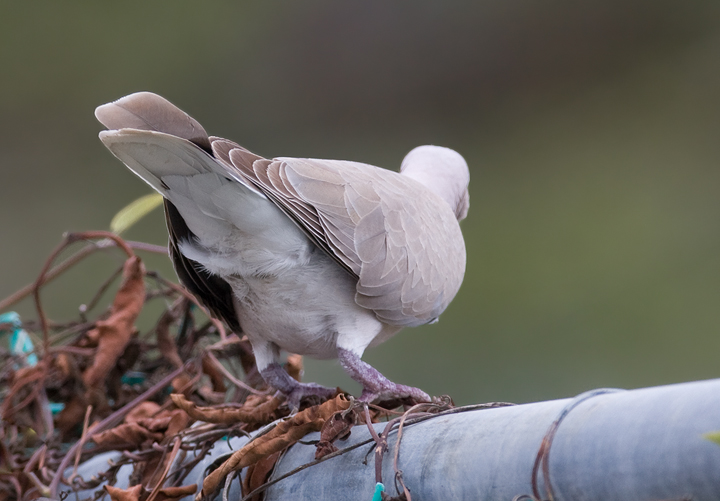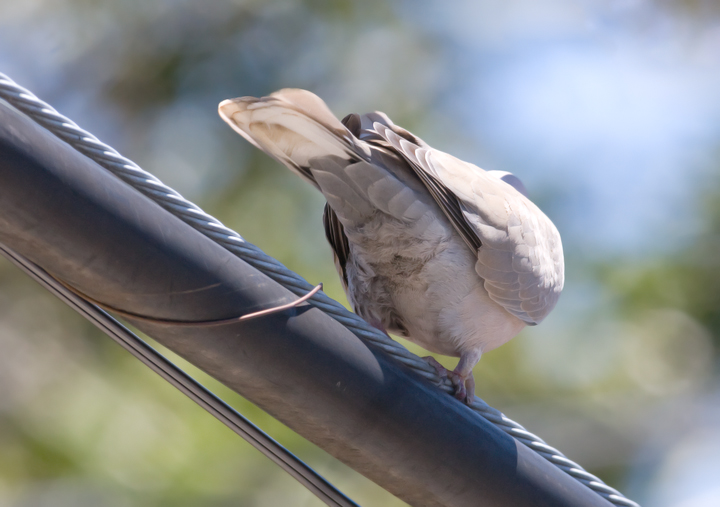Eurasian Collared-Dove (Streptopelia decaocto)
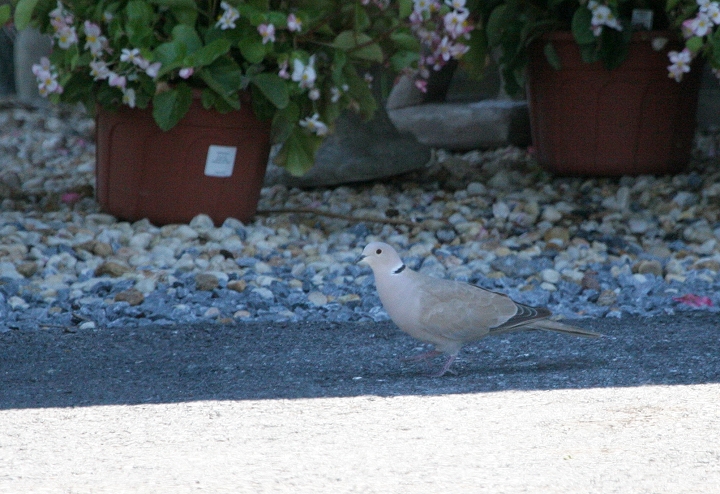
Above and below: A rare-in-Maryland Eurasian Collared-Dove photographed in Frederick Co., Maryland (8/12/2006). This was the first chaseable Eurasian Collared-Dove in Maryland.
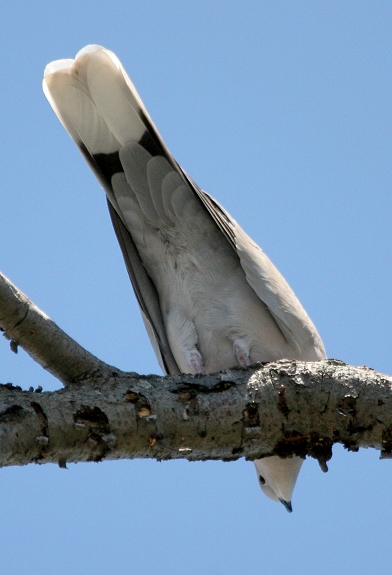
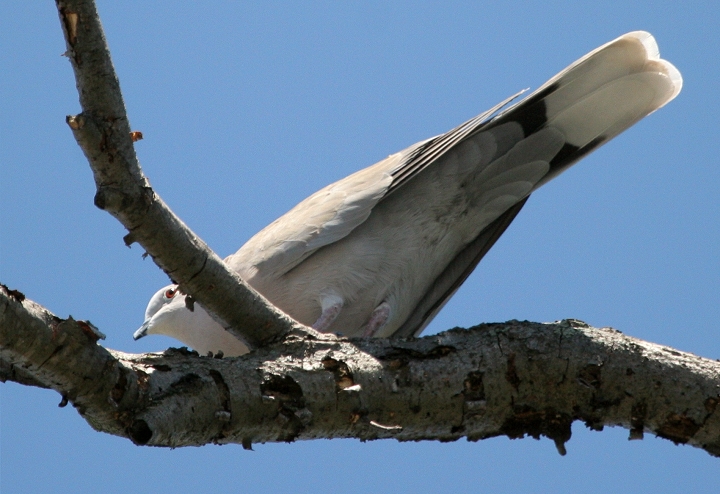
Below: Most people don't realize that advanced technology is the key to the Eurasian Collared-Dove's conquest of North America. This photo shows one of two birds recorded in late 2006 and early 2007 on Hooper's Island, Dorchester Co., Maryland. These two birds have been the most consistently seen yet in Maryland and are the first multi-EUCD sighting in the state. They were first found by my friend Frode Jacobsen on 11/19/2006. This photo, proving the frightening reality of these birds' machinations, was taken on 1/21/2007.

Below: One of four Eurasian Collared-Doves found at South Point, Worcester Co., Maryland (11/10/2007). Taylor McLean found one here during the Rarity Roundup on 11/10 and Dave Powell found four on 11/11. This is a new high count for the state.
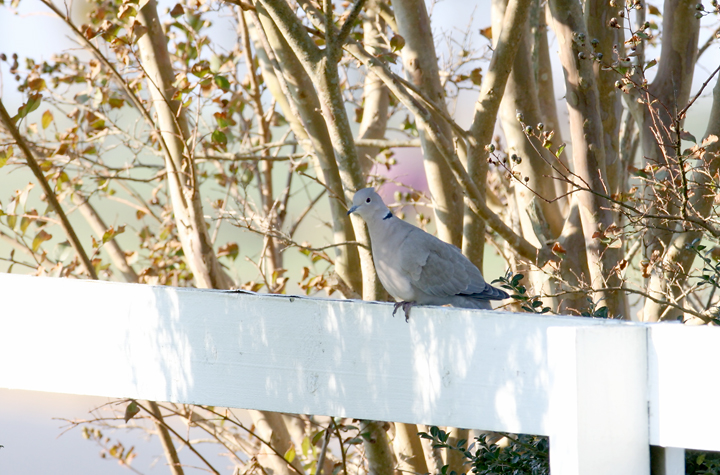
Below two: Southern Florida in February 2005.


A photo comparison from Puerto Rico - African Collared-Doves (i.e., Ringed Turtle-Doves) are a common exotic species in Puerto Rico, but it seems the Eurasian Collared-Dove has now gotten a foothold in the southwest. Can you identify the species shown in each photo?
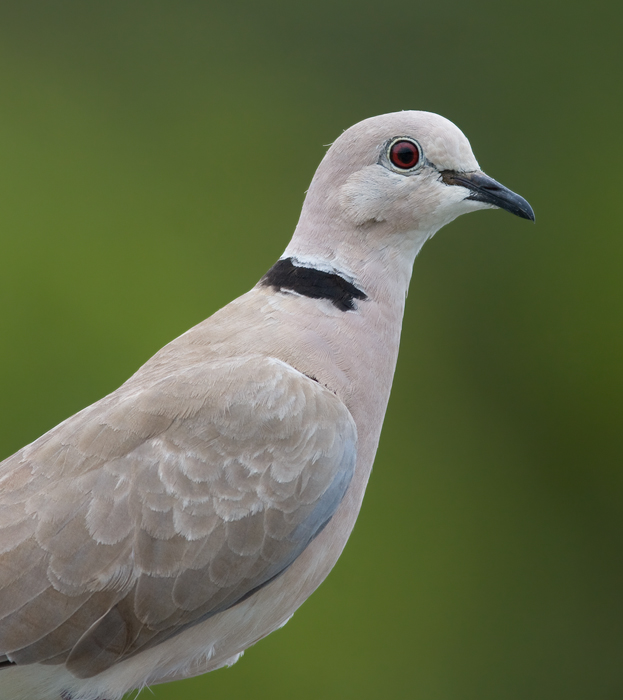
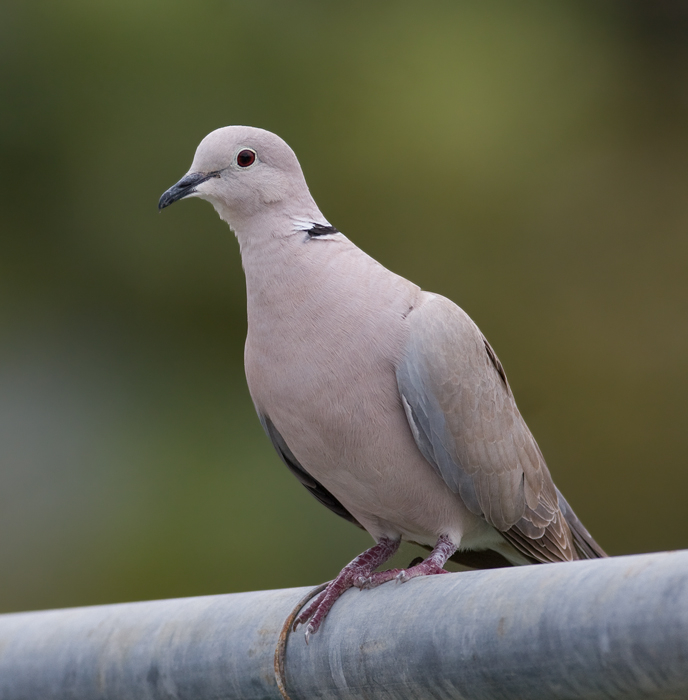
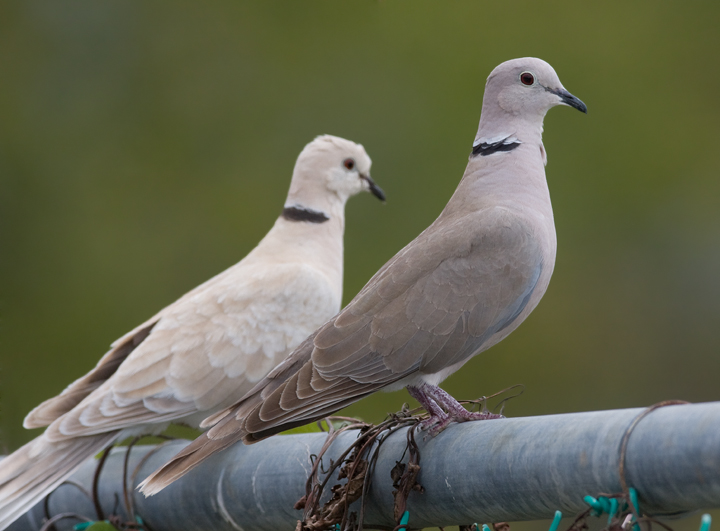
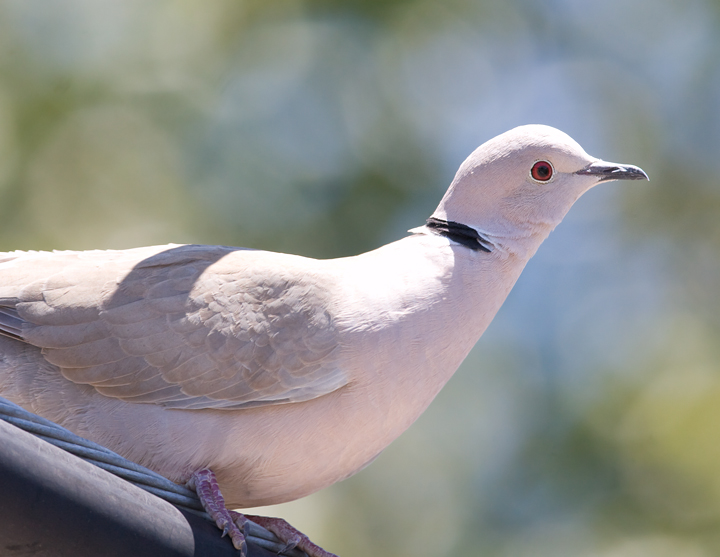
Although there are many subtle field marks worth noting, the most reliable test is the pattern of the tail and undertail coverts (and voice). Only the fourth image (directly above) is a Eurasian Collared-Dove. In the image with two birds, both are actually African Collared-Doves. Below, note the white undertail coverts in the African Collared-Dove (first image) and then the gray undertail coverts of the Eurasian Collared-Dove (second image). The Eurasian Collared-Dove has a wider, more square tail that shows dark outer webs. The primaries of a Eurasian Collared-Dove are much darker, but I found that lighting conditions often made this difficult to judge (see below two, for example). A combination of field marks is the way to go. It was very cool getting to study so many African Collared-Doves. My only Eurasian Collared-Doves were between the towns of Combate and Pole Ojea.
